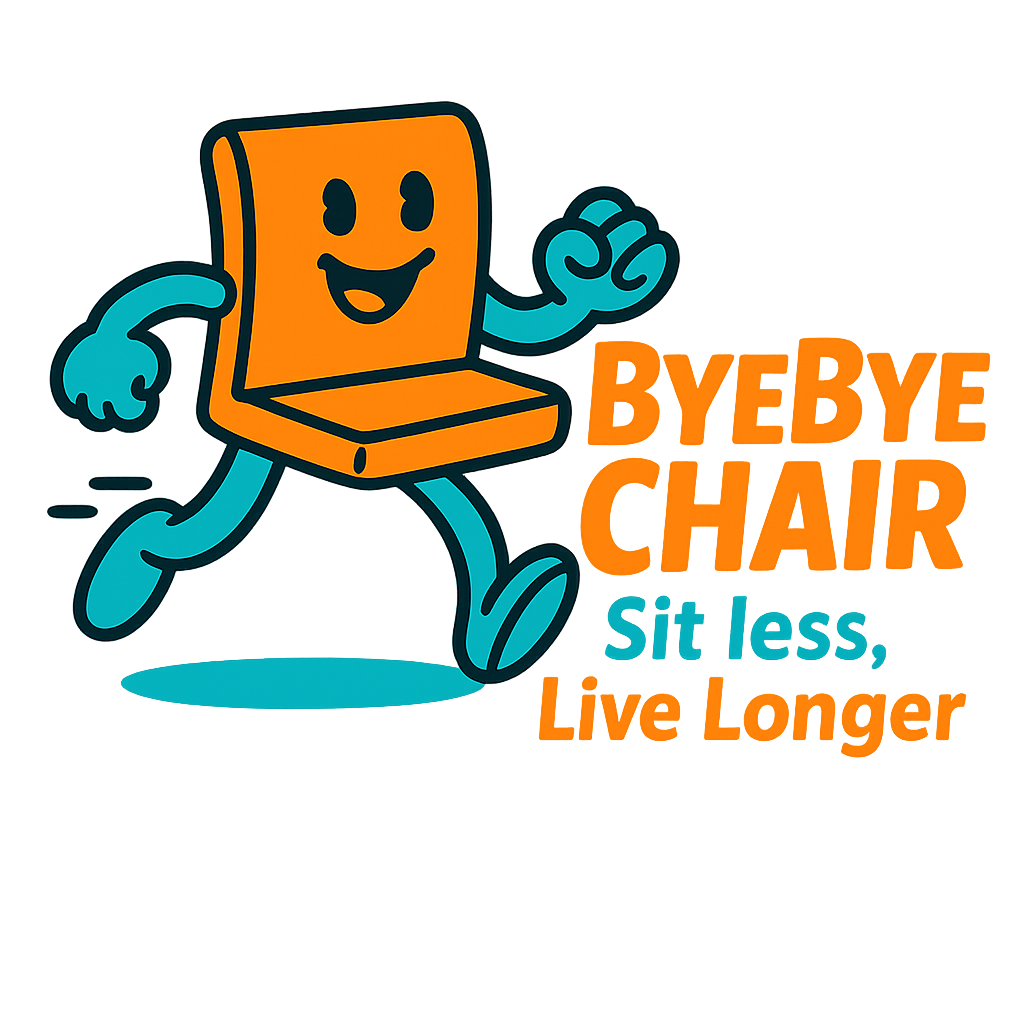Why Desk Workers Need a Simple Rule?
For most desk workers, sitting feels inevitable. Reports suggest that the average office employee spends 7 to 10 hours a day in a chair, often without meaningful breaks. While this may seem harmless, scientists now refer to prolonged sitting as “the new smoking.” It increases risks of heart disease, diabetes, and musculoskeletal pain.
Yet very few people can realistically stand all day or replace desk work with a treadmill desk. That’s why researchers have highlighted a practical compromise—the 30–2 rule. It doesn’t require special equipment, a new lifestyle, or even a gym membership. All you need is consistency: every 30 minutes of sitting, stand and move for 2 minutes. Over an 8-hour workday, this creates more than 30 minutes of activity without sacrificing productivity.
What the 30–2 Rule Actually Means
The 30–2 rule has two parts:
- Sit for 30 minutes. Work without guilt, focusing on your tasks.
- Move for 2 minutes. Stand up, stretch, walk, or do any light activity.
That’s it. No stopwatch accuracy required—just a steady rhythm. The idea is not to burn calories but to interrupt harmful sedentary patterns. Those 120 seconds are enough to re-activate circulation, reset your posture, and reawaken focus.
Think of it as a “reset button” for both your body and brain.
Why 30 Minutes? Why 2 Minutes?
Researchers have found that 30 minutes of uninterrupted sitting is when circulation, posture, and metabolism begin to noticeably decline. After this threshold, stress accumulates in the lower back, hips, and neck. Two minutes of light movement is long enough to reverse these effects without pulling you out of workflow.
It’s also psychologically manageable. Unlike a 10- or 15-minute break, which feels disruptive, two minutes is small enough to ignore resistance. Even the busiest professional can stand, stretch, or walk across the room for 120 seconds.
How to Embed the Rule Without Annoying Alarms
One of the reasons many workers fail to maintain healthy breaks is the reliance on loud alarms or disruptive apps. The secret is to embed the 30–2 rule seamlessly into your day.
- Subtle reminders. Use smartwatch vibrations, browser extensions, or a silent timer.
- Habit stacking. Pair movement with existing tasks—refilling water, checking emails, or finishing a call.
- Micro-triggers. Each time you send a message or hit “save,” stand up and stretch.
- Be forgiving. Missed one break? Double the movement next round. Progress matters more than perfection.
This way, the rule feels natural, not forced.
What to Do in Those Two Minutes
You don’t need a gym routine. Here are realistic, desk-friendly ideas:
- Walk to the kitchen or bathroom, even if you don’t need to.
- Shoulder rolls, neck stretches, or chest openers.
- Ten squats, calf raises, or wall push-ups.
- Stand tall, take deep breaths, and look out a window.
- Use resistance bands or do simple yoga poses if you work from home.
These micro-movements restore posture, improve circulation, and recharge energy—without sweating through your shirt.
The Benefits You’ll Feel in Weeks
The 30–2 rule pays off surprisingly fast:
- Less pain and stiffness. Muscles stay active, reducing back and neck pain.
- Better posture awareness. Standing regularly resets spinal alignment.
- Sharper focus. Micro-breaks prevent mental fatigue, improving productivity.
- Increased steps. By the end of the day, you’ll have walked hundreds of extra steps.
- Improved mood. Even short movement boosts endorphins and reduces stress.
Within a month, many workers report that they not only feel healthier but also work more efficiently.
The Science Behind the Habit
A number of studies support short, frequent movement breaks. For example:
- Circulation: Light walking for just 2 minutes improves leg blood flow and reduces risk of clots.
- Metabolism: Breaking up sitting time helps regulate blood sugar and insulin sensitivity.
- Musculoskeletal health: Standing and stretching relieves compression in the spine and hips.
- Cognition: Brief activity boosts oxygen delivery to the brain, improving clarity and attention.
Unlike long workouts at the end of the day, distributed breaks keep your system engaged throughout.
Common Excuses—and Why They Don’t Hold Up
“I don’t have time.” Two minutes is 1/30th of an hour. That’s less than the time lost when you check your phone.
“It feels awkward at work.” Offices worldwide are now encouraging movement. If anything, you’ll set a positive example.
“I already exercise daily.” Excellent—but exercise doesn’t cancel out eight hours of stillness. The body thrives on frequency, not just intensity.
“I’ll lose focus.” Micro-breaks actually sharpen concentration. You’ll return to work refreshed.
A Sample 30–2 Workday
Here’s what a morning might look like:
- 9:00 AM: Begin work at your desk.
- 9:30 AM: Stand, stretch arms overhead, refill your water glass.
- 10:00 AM: Walk during a phone call.
- 10:30 AM: Do 10 calf raises by your desk.
- 11:00 AM: Take the stairs during a bathroom break.
- 11:30 AM: Shoulder rolls and neck stretches.
By lunchtime, you’ve already accumulated 12 minutes of movement—without disrupting workflow.
Tools to Support the 30–2 Rule
- Fitness trackers & smartwatches – vibrate gently as reminders.
- Desktop apps – nudge you with stretch prompts.
- Standing desks – make transitions faster.
- Old-fashioned sticky notes – simple visual cue on your monitor.
Use whichever tool feels easiest.
Making It Stick Long-Term
Like any habit, the 30–2 rule becomes automatic through repetition. To ensure success:
- Start small. Apply the rule to just half your day.
- Celebrate wins. Notice how you feel looser and sharper.
- Track consistency. Use apps or journals.
- Make it social. Encourage colleagues to join you.
In time, you’ll find yourself standing naturally, without reminders.
Bottom Line
The 30–2 rule is one of the simplest ways to protect health as a desk worker. Sit for 30, move for 2, and repeat. It doesn’t cost money, take extra time, or require fancy equipment.
Over days and weeks, it reduces stiffness, improves focus, and increases overall well-being. Over years, it protects against chronic disease and builds a healthier relationship with work.
👉 Try it now: After your next 30 minutes, stand up, stretch, and move for 2 minutes. Your body and brain will thank you.
Every 30 minutes of sitting, stand and move for 2. How to embed it into your day without annoying alarms.
Why the 30–2 Rule Works
Modern desk work traps millions of people in static postures for hours. Research shows that prolonged sitting is linked to back pain, reduced circulation, and increased risks of chronic disease. The 30–2 rule is a simple, evidence-based countermeasure: every 30 minutes of sitting is followed by 2 minutes of movement.
Those two minutes don’t need to be intense exercise—they can be as simple as standing, stretching, or walking around the office. Yet the benefits accumulate quickly: better posture, reduced stiffness, sharper focus, and more energy.
How to Apply the Rule Without Annoying Alarms
One of the main reasons people abandon break routines is that reminders feel disruptive. The key to embedding the 30–2 rule into your day is subtlety and consistency.
- Use silent notifications. Smartwatches, subtle phone vibrations, or desktop apps can nudge you gently without breaking concentration.
- Stack with existing habits. Every time you check email, grab water, or finish a call, stand up and stretch.
- Stay flexible. If you miss one break, don’t abandon the routine. Simply add an extra two minutes the next time you remember.
Two Minutes: What Can You Actually Do?
Two minutes may sound short, but it’s plenty of time to reset your body. Here are simple, office-friendly ideas:
- Stand and roll your shoulders.
- Do a quick walk to the kitchen or hallway.
- Stretch your calves or hips beside your desk.
- Breathe deeply and reset your posture before sitting down again.
Mixing up movements keeps it fresh and engages different muscle groups across the day.
The Science Behind It
Studies in workplace ergonomics confirm that breaking up sitting time with light activity improves circulation, reduces insulin spikes, and restores muscle activity. Two minutes of movement every half hour lowers risk factors for diabetes and cardiovascular disease, while also improving mental clarity.
In other words: small actions, repeated consistently, add up to powerful long-term health protection.
Overcoming Common Excuses
“I don’t have time.” Two minutes is less than 1% of your work hour, and it actually improves productivity.
“I’ll look weird in the office.” More workplaces are encouraging wellness breaks. Normalizing movement benefits everyone.
“I already go to the gym.” That’s excellent—but even a tough workout doesn’t offset 8 hours of uninterrupted sitting. Movement needs to be distributed across the day.
Real Benefits You’ll Notice
Within weeks of practicing the 30–2 rule, most desk workers report:
- Less back and neck stiffness.
- More focus and fewer energy dips.
- Better posture awareness.
- Higher daily step counts without extra effort.
Over months and years, these micro-breaks significantly reduce the risk of chronic health problems linked to sedentary behavior.
Making It Stick
Consistency is the secret. To make the 30–2 rule a lasting habit:
- Start small—apply it for half your workday.
- Link it to existing triggers like calls or emails.
- Track your progress with a step counter or app.
- Reward yourself with the feeling of lightness and clarity after each break.
Soon, standing up every 30 minutes will feel natural.
Bottom Line
The 30–2 rule is one of the simplest, most practical habits for desk workers. It doesn’t require special equipment, complex tracking, or major lifestyle changes. Just sit for 30, move for 2, and repeat.
👉 After your next 30 minutes at the desk, stand up, walk for 2 minutes, stretch your shoulders, and notice the difference. Your body and mind will thank you.

